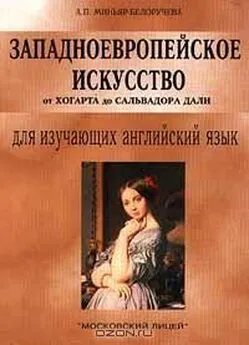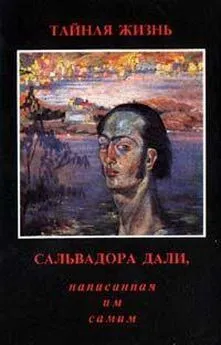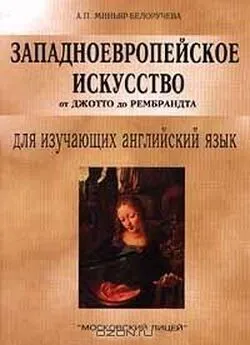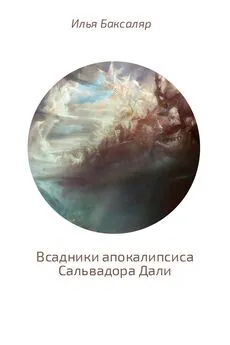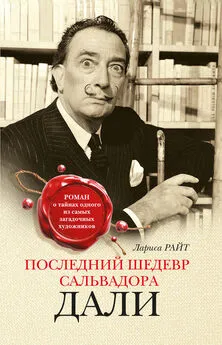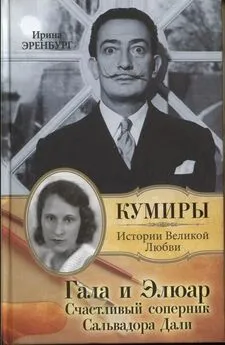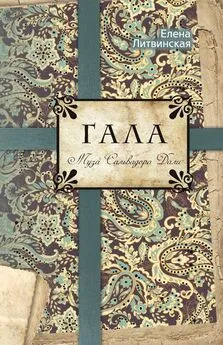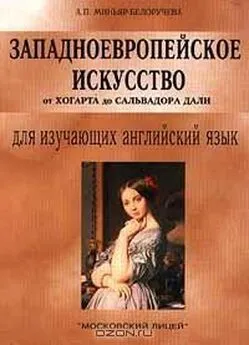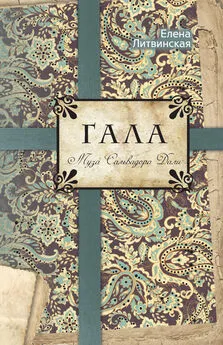Алла Миньяр-Белоручева - Западноевропейское искусство от Хогарта до Сальвадора Дали
- Название:Западноевропейское искусство от Хогарта до Сальвадора Дали
- Автор:
- Жанр:
- Издательство:«Московский Лицей»
- Год:1999
- Город:Москва
- ISBN:5-7611-0182-3
- Рейтинг:
- Избранное:Добавить в избранное
-
Отзывы:
-
Ваша оценка:
Алла Миньяр-Белоручева - Западноевропейское искусство от Хогарта до Сальвадора Дали краткое содержание
Тексты настоящего пособия охватывают почти три века истории западноевропейского искусства от Хогарта до Сальвадора Дали. Это позволяет обучаемым наряду с усвоением обширного лексического материала, приобрести культурологические знания, поскольку тексты содержат информацию о жизни и творчестве крупнейших западно-европейских художников XVIII – XX вв. Система упражнений направлена на усвоение лексического материала и развитие навыков устной речи.
Данная книга является второй частью цикла учебных пособий «Западноевропейское искусство (для изучающих английский язык)». В первую книгу вошли тексты, охватывающие пять веков западноевропейской живописи oт Джотто до Рембрандта. Данное пособие предназначено для студентов-искусствоведов, учащихся классических гимназий, лицеистов и всех изучающих английский язык и интересующихся западноевропейским искусством.
Западноевропейское искусство от Хогарта до Сальвадора Дали - читать онлайн бесплатно полную версию (весь текст целиком)
Интервал:
Закладка:
Западноевропейское искусство от Хогарта до Сальвадора Дали
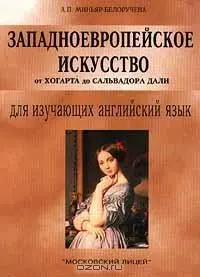
Учебный центр «Московский Лицей»
пособие для изучающих английский язык
издание второе переработанное и дополненное
Москва – 1999
Рецензенты:
Е. Б. Яковлева, доктор филологических наук, профессор
И. В. Шевлягина, кандидат филологических наук, доцент
РЕКОМЕНДОВАНО кафедрой иностранных языков исторического факультета МГУ им. М. В. Ломоносова
Введение
Данная книга является второй частью цикла учебных пособий «Западноевропейское искусство (для изучающих английский язык)». В первую книгу этого цикла вошли тексты, охватывающие пять веков западноевропейской живописи от Джотто до Рембрандта.
Материалом настоящего пособия, состоящего из 19 уроков, послужили оригинальные тексты видных историков искусства. Тематика текстов охватывает почти три века западноевропейской живописи от Хогарта до Сальвадора Дали. Это дает возможность обучаемым наряду с усвоением обширного лексического материала, составить общее представление о направлениях развития западноевропейской живописи за последние триста лет.
Объем пособия позволяет остановиться только на девятнадцати художниках. В представленных текстах, дается краткая биографическая справка и анализируются некоторые произведения искусства наиболее выдающихся художников нового времени.
Тексты в пособии расположены в хронологическом порядке и позволяют проследить революционный ход развития западноевропейской живописи, с начала XVIII века и почти до конца XX века. Каждый урок включает тексты и упражнения, позволяющие проверить как общее понимание прочитанного, так и закрепить только что усвоенный лексический материал. Все тексты аутентичны.
Пособие может быть использовано не только студентами-искусствоведами, но и самым широким кругом читателей, интересующихся историей западноевропейской живописи. В рамках издания готовятся учебные пособия по скульптуре и архитектуре для изучающих английский язык.
Unit I Hogarth (1697-1764)
A strikingly original school of painting arose in eighteenth-century England. The real founder of the modern British school was William Hogarth, a Londoner whose narrative candour and satiric wit are as effective as his dazzling pictorial skill. Although Hogarth tried his hand occasionally at mythological and historical subjects, he was at his best in portraits and moralistic cycles. The latter were painted as bases for engravings, which Hogarth sold widely and profitably. The most successful were A Rake's Progress , A Harlot's Progress , and Marriage a la Mode , 1743-45, whose opening episode is Signing the Contract . The scene is set diagonally in depth for greater theatrical effect. In a room of his London house, lined with Old Masters (which Hogarth professed to hate), the gouty alderman, father of the bride, sits before a table spread with gold coins of the dowry and expatiates about his family tree, to which he proposes to add the earl. That gentleman, who has exhausted his fortune in building the Palladian mansion seen out the window (Hogarth detested the Palladian style) admires himself in a mirror. His betrothed, meanwhile, is listening to the compliments murmured in her ear by the attorney. Clearly, the story will come to a bad end. The energetic composition owes much to the Rococo, but Hogarth's robust handling of poses and his special variety of bold yet soft brushwork are as original as his wit.
Make sure you know how to pronounce the following words:
William Hogarth; alderman; diagonally; Rococo; Palladian; mansion; dowry; earl; betrothed; candour; expatiate; profess
A Rake's Progress – «Карьера мота»
A Harlot's Progress – «Жизнь куртизанки»
Marriage a la Mode – «Модный брак»
Signing the Contract – «Подписание контракта»
I. Read the text. Make sure you understand it. Mark the following statements true or false.
1. A strikingly original school of painting arose in fifteenth-century England.
2. In the main Hogarth painted colossal altarpieces.
3. Hogarth never tried his hand at mythological and historical subjects.
4. The story in the Marriage a la Mode will come to a happy end.
5. Hogarth was fond of the Palladian style.
6. Moralistic cycles were painted as bases for engravings.
II. How well have you read? Can you answer the following questions?
1. What did Hogarth found? What was he at his best?
2. What were Hogarth's most successful cycles?
3. What is the subject of the opening episode of the Marriage a la Mode ? Where is the opening episode set? How are the figures arranged? What does the alderman do? How is the bride depicted? What does the earl do?
4. What is seen out the window? What lines the walls of the room?
5. What compositional style dominates in the Signing the Contract ? Why is the scene set diagonally?
6. Were all Hogarth's devices original and witty?
III. i Give Russian equivalents of the following phrases:
a school of painting; a founder of the school; narrative candour; satiric wit; pictorial skill; moralistic cycles; theatrical effect; Old Masters; the robust handling of poses; the dowry; to owe to; to expatiate about; a family tree; to exhaust the fortune; to profess to hate; the betrothed; bold brushwork; bases for engravings; an opening episode.
ii. Give English equivalents of the following phrases:
смелые мазки; приданое; цикл нравоучительных картин; генеалогическое дерево; школа живописи; быть обязанным кому-либо; рассуждать на тему; основатель школы; театральный эффект; основы для гравюр; сатирический ум; растратить состояние; искренность; суженая; живописное мастерство; открыто выражать свою неприязнь.
iii. Make up sentences ofyour own with the given phrases
iv. Arrange the following in the pairs of synonyms:
a) to line; to exhaust; alderman; dazzling; strikingly; expatiate; dowry; detest;
b) municipal legislator; to discuss; extremely; to cover; to waste; hate; marriage portion; brilliant.
IV. Translate the text into English.
Национальная живопись в Англии начинается с Уильяма Хогарта. Художник занимался исторической живописью, религиозными сюжетами. Однако истинный Хогарт – это жанровые картины и гравюры. В своих произведениях, объединенных в повествовательные циклы, он обращался к разнообразным темам. Хогарт полагал, что его работы будут способствовать улучшению нравов. Для того, чтобы как можно больше людей могли познакомиться с его произведениями, художник делал с них гравюры, которые часто оказывались интереснее самих оригиналов. Всю свою творческую жизнь Хогарт писал портреты: групповые, парадные, автопортреты. Умение передать характер человека принесли художнику успех. Портрет всегда был в Англии самым любимым жанром живописи.
V. Summarize the text.
VI. Topics for discussion.
1. Hogarth's moralistic cycles.
2. Hogarth's style and characters.
3. Satire in art.
Unit II Gainsborough (1727-1788)
The most accomplished and the most influential English painter of the eighteenth century was Thomas Gainsborough. Until 1774 Gainsborough painted landscapes and portraits in various provincial centres before settling in London for the last fourteen years of his life. Although the elegant attenuation of his lords and ladies is indebted to his study of Van Dyck, Gainsborough achieved in his full-length portraits a freshness and lyric grace all his own. Occasional objections to the lack of structure in his weightless figures are swept away by the beauty of his colour and the delicacy of his touch. The figure in Mary Countess Howe , painted in the mid-1760s, is exquisitely posed in front of a landscape background. Gainsborough has expended his ability on the soft shimmer of light over the embroidered organdy of her overdress and cascades of lace at her elbows, sparkling in the soft English air; the only solid accents in the picture are her penetrating eyes. Although Gainsborough was country-born, his landscape elements seem artificial, added like bits of scenery to establish a spatial environment for the exquisite play of colour in the figure.
In later life Gainsborough painted more freely and openly. Although his landscapes, which he preferred to his portraits, exhale a typically English freshness, they were painted in the studio on the basis of small models put together from moss and pebbles. Constructed in the grand manner of Hobbema, a seventeenth-century Dutch master, and painted with soft strokes of wash like those of Watteau, the Market Cart , of 1787, shows an almost rhapsodic abandonment to the mood of nature, which led to the great English landscapists of the early nineteenth century.
Читать дальшеИнтервал:
Закладка:
